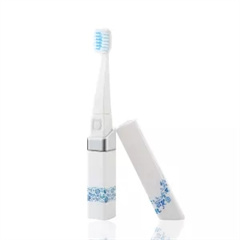Caring for braces requires special attention to ensure effective cleaning while avoiding damage to the braces themselves. Here’s how to care for braces and choose the best toothbrushes:
1. Selecting the Right Toothbrush:
- Orthodontic Toothbrush: Consider using a toothbrush specifically designed for braces. These toothbrushes often have special bristle patterns and angles that can help clean around brackets and wires more effectively.
- Soft-Bristle Toothbrush: Whether you choose an orthodontic toothbrush or a regular one, opt for a soft-bristle brush. Soft bristles are gentle on both your teeth and the braces, reducing the risk of damage.
- Electric Toothbrush: An electric toothbrush can be a good choice for cleaning around braces, as some models come with brush heads specifically designed for orthodontic care. The oscillating or rotating motion can help remove plaque effectively.
2. Brushing Technique:
- Angle the Brush: Hold your toothbrush at a 45-degree angle to your gums and braces. This angle allows the bristles to clean around the brackets and wires.
- Gentle Circular Motions: Use gentle circular motions to brush the surfaces of your teeth, both around the brackets and along the gumline.
- Inner Surfaces: Don’t forget to clean the inner surfaces of your teeth and braces as well. Tilt the brush vertically to reach these areas.
- Interdental Brushes: Consider using interdental brushes to clean between the brackets and wires. These small brushes can help remove debris that accumulates in tight spaces.
3. Additional Care Tips:
- Floss Threaders or Floss Picks: Use floss threaders to easily thread dental floss under the wires for effective flossing. Alternatively, floss picks designed for braces can also help you clean between your teeth.
- Water Flosser: A water flosser can be an excellent addition to your oral care routine. It uses a stream of water to remove food particles and plaque from hard-to-reach areas around braces.
- Regular Check-ups: Schedule regular dental check-ups with your orthodontist and dentist. They can monitor your progress, make any necessary adjustments to your braces, and provide guidance on oral care.
4. Brushing Frequency:
- Aim to brush after every meal and snack to prevent food particles from getting stuck in your braces. If you can’t brush immediately, rinse your mouth with water.
5. Avoid Certain Foods:
- Minimize consumption of sticky, hard, or crunchy foods that can damage braces. This includes items like popcorn, hard candies, and chewing gum.
Remember that proper care for braces is essential to prevent cavities, gum problems, and staining. Be patient with your brushing routine, and don’t hesitate to ask your orthodontist for specific guidance tailored to your needs. Following these tips can help you maintain good oral hygiene while undergoing orthodontic treatment.








